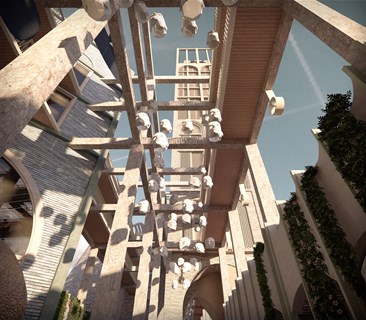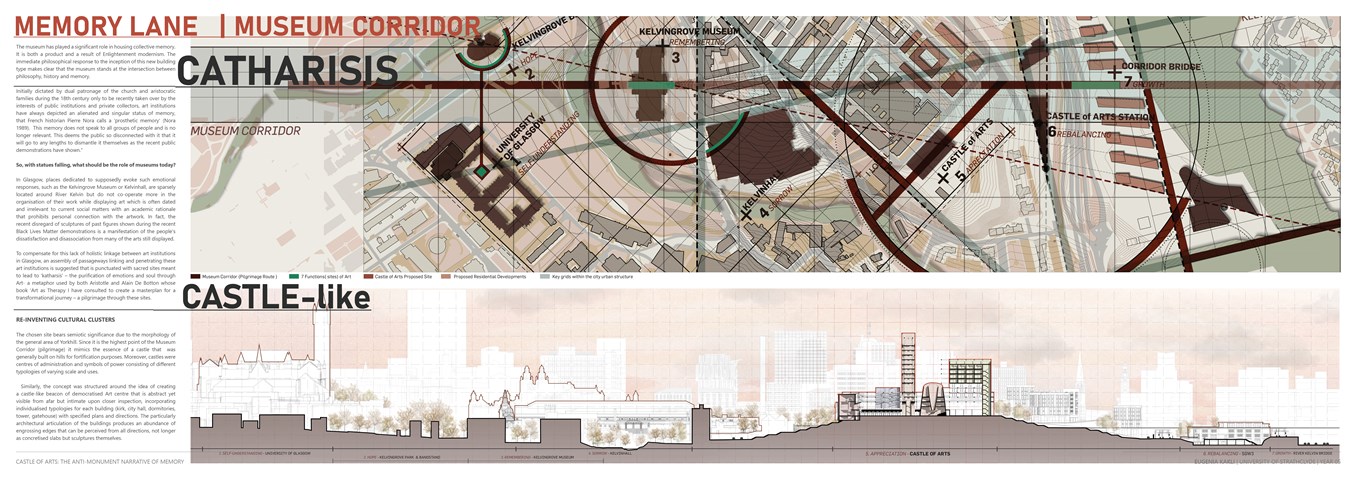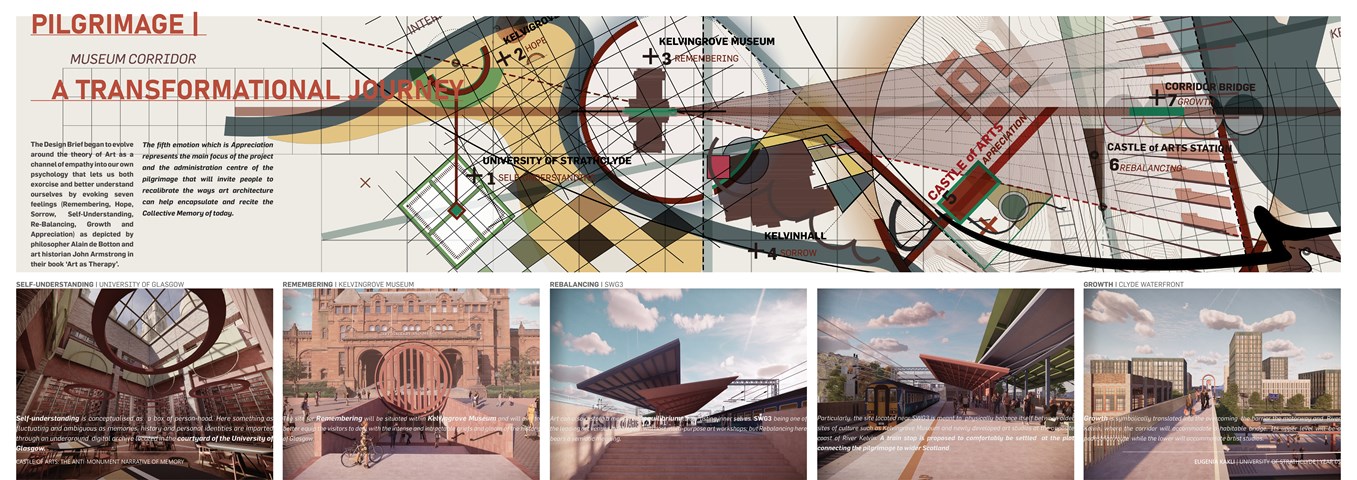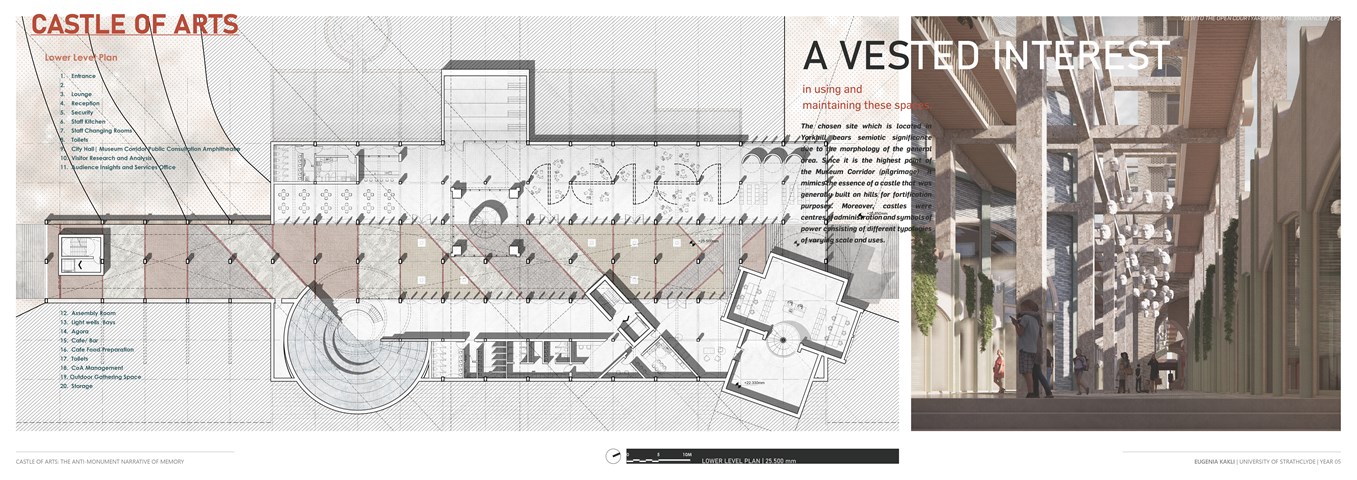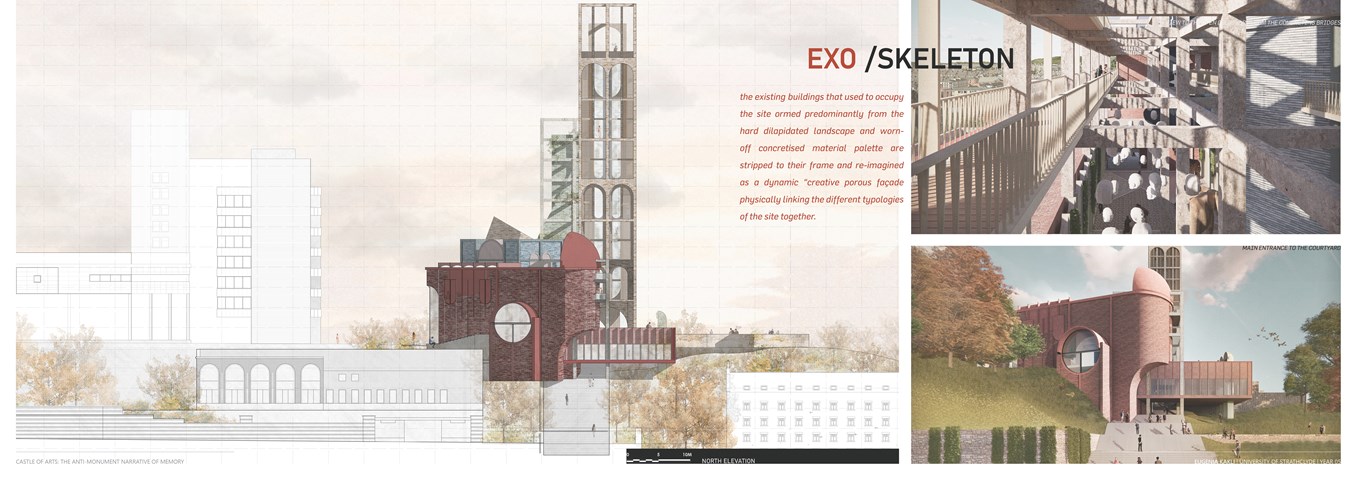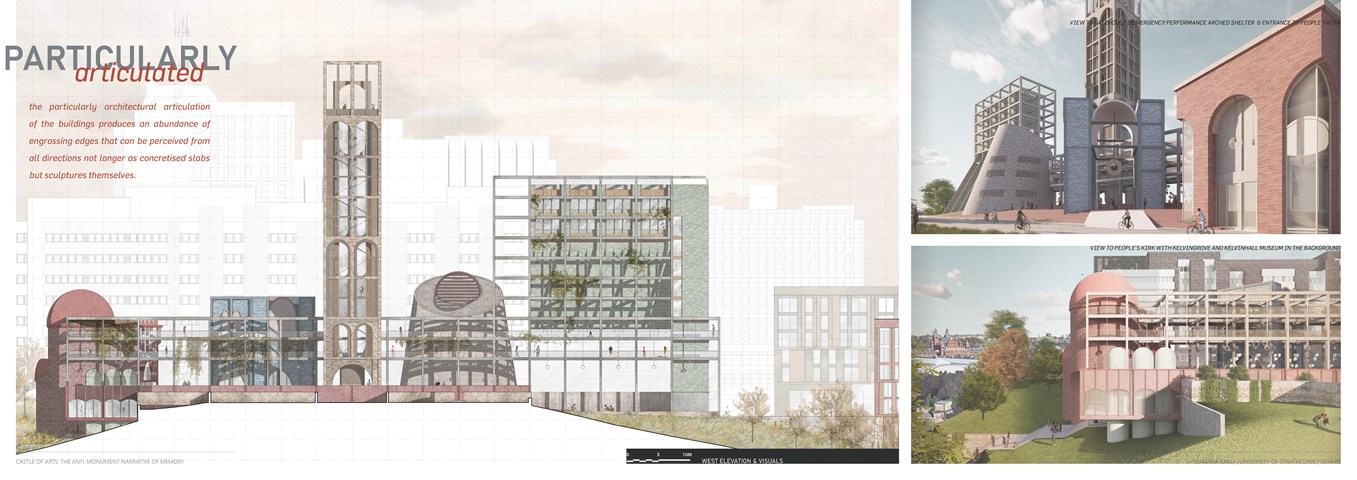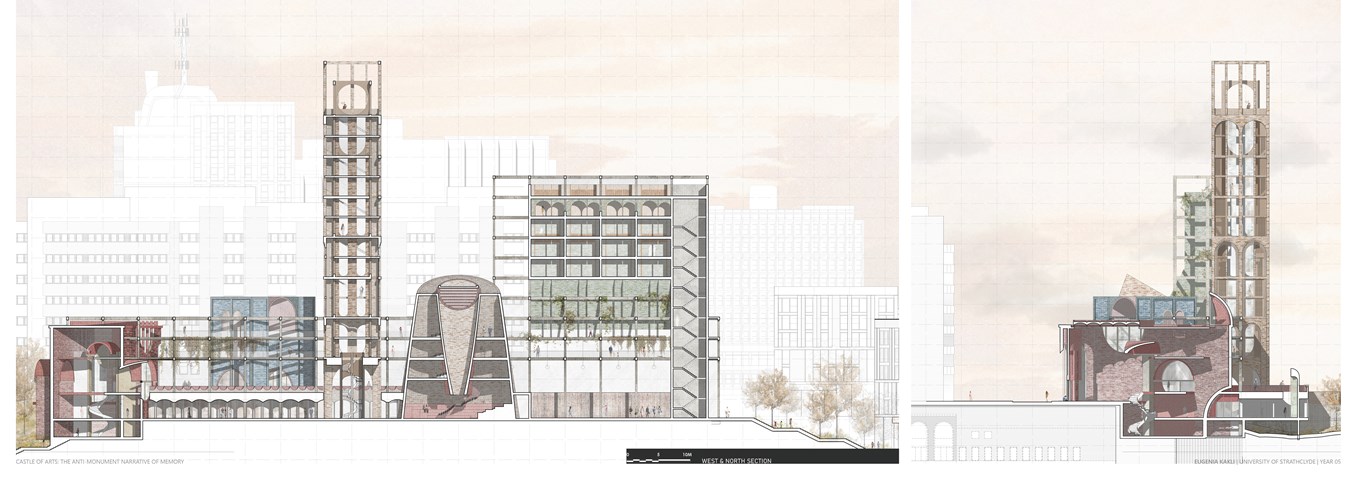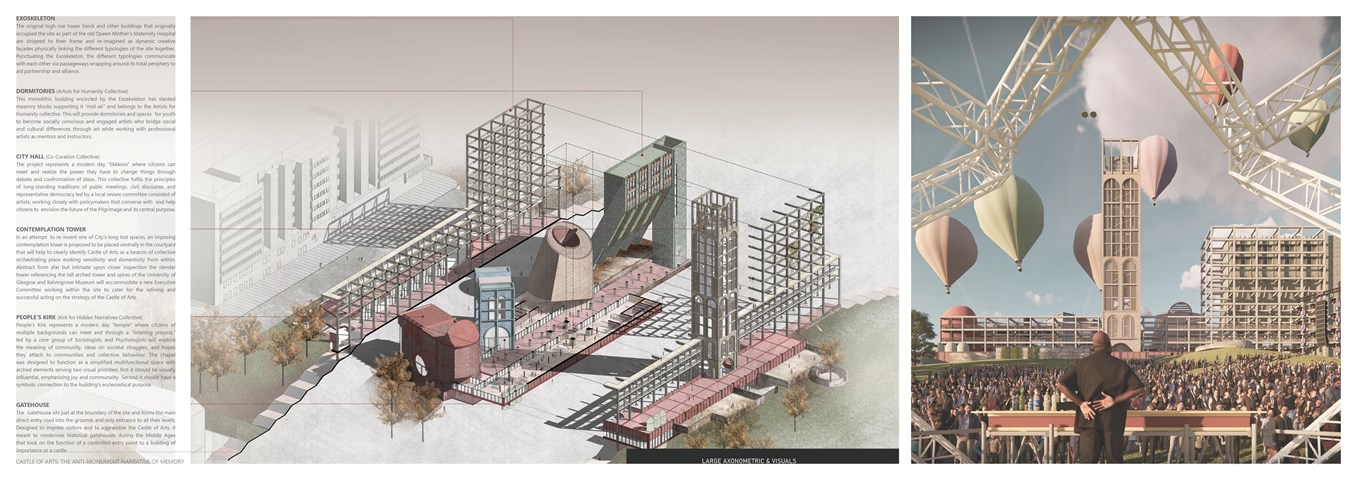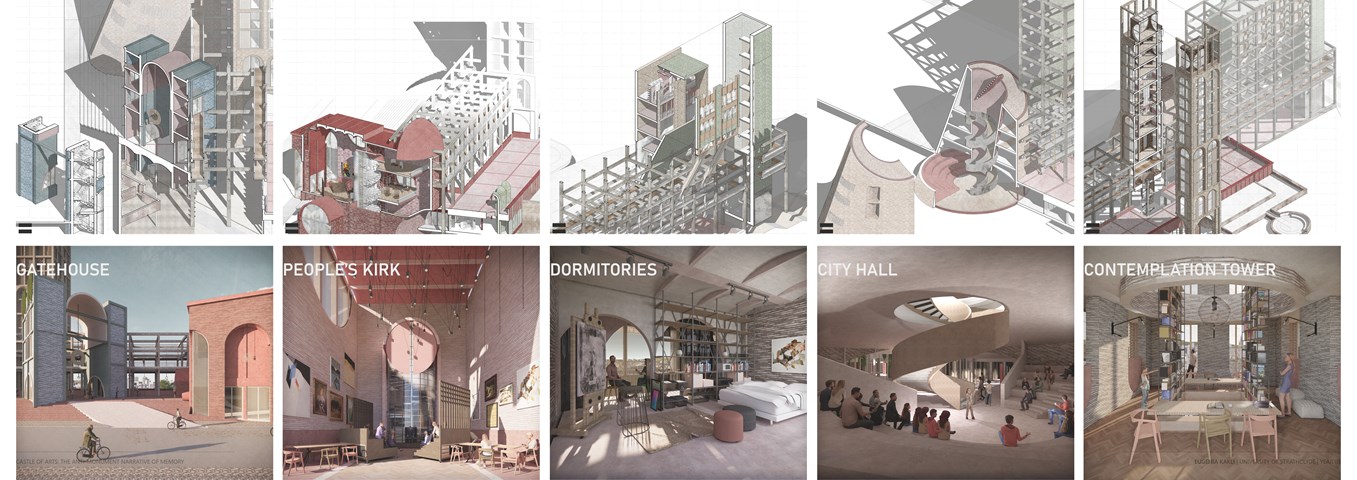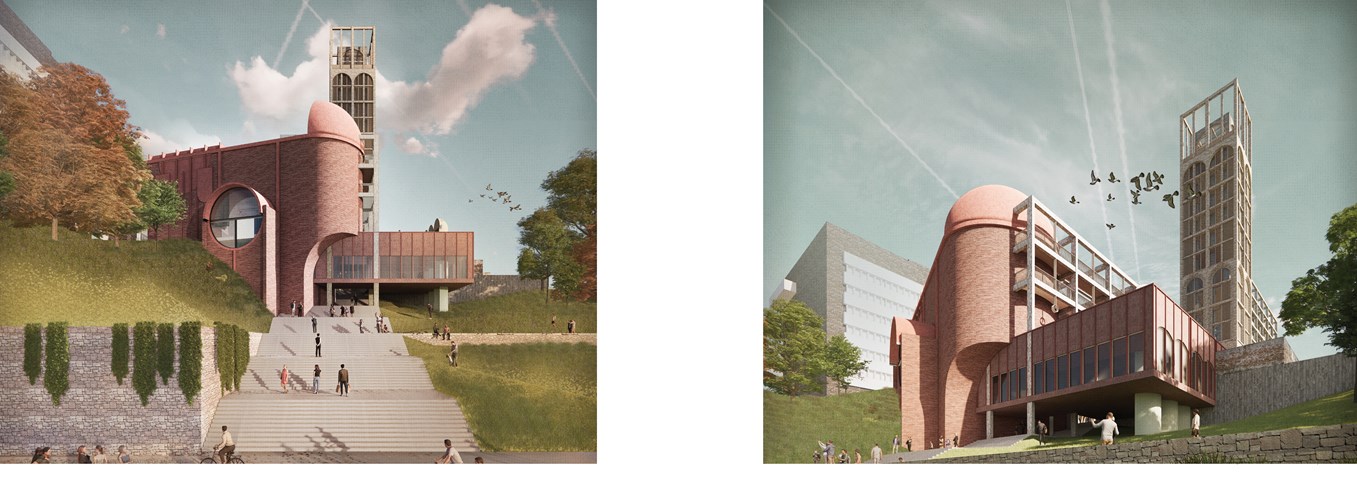CASTLE of ARTS
The Anti-Monument Narrative of Memory
The museum has played a significant role in housing collective memory. It is both a product and a result of Enlightenment modernism. The immediate philosophical response to the inception of this new building type makes clear that the museum stands at the intersection between philosophy, history, and memory.
Initially dictated by dual patronage of the church and aristocratic families during the 18th century only to be recently taken over by the interests of public institutions and private collectors, art institutions have always depicted an alienated and singular status of memory, that French historian Pierre Nora calls a ‘prosthetic memory’ (Nora 1989). This memory does not speak to all groups of people and is no longer relevant. This deems the public so disconnected with it that it will go to any lengths to dismantle it themselves as the recent public BLM demonstrations have shown.
So, with statues falling, what should be the role of museums today?
In Glasgow, places dedicated to supposedly evoke such emotional responses, such as the Kelvingrove Museum or Kelvinhall, are sparsely located around River Kelvin but do not co-operate more in the organisation of their work while displaying art which is often dated and irrelevant to current social matters with an academic rationale that prohibits personal connection with the artwork. To compensate for this lack of holistic linkage between art institutions in Glasgow, an assembly of passageways linking and penetrating these art institutions is suggested that is punctuated with sacred sites meant to lead to ‘katharsis’ – the purification of emotions and soul through Art- a metaphor used by both Aristotle and Alain De Botton whose book ‘Art as Therapy I have consulted to create a masterplan for a transformational journey – a pilgrimage through these sites.
The concept behind the pilgrimage eclipses the evolvement into a more glamorised approach to exhibiting art. Rather, it is about the democratisation of knowledge, propelling a deviation from curators withholding knowledge to active civic engagement in shaping narratives representative of all social groups and their experience. In an attempt to reinvent the role of art institutions today in the consolidation of our psychological state, a more accessible, ambitious, and diverse space not only for sharing but making and deciding of Art is created by forming different Collectives of organisers consisting of educators, artists, and members of the public to predict social movement trends and come up in unison with methods and techniques to create an Art stimulus for therapy of the self.
The Collectives are architecturally manifested through a series of modernised typologies typically found on a castle (chapel, city hall, dormitories, tower, gatehouse) placed at the highest ground of the pilgrimage to symbolise the essence of a Castle ─ generally built on hills, and therefore its significance and orchestrating role in the making of the pilgrimage. The particular articulation of the buildings produces an abundance of engrossing edges that can be perceived from all directions ─ no longer as concretised slabs but sculptures themselves. When people participate in the realisation, and conservation of places, a concrete commitment in frequenting and maintaining these spaces is fostered. This is when ‘true ownership’ and collective Memory ensues.
